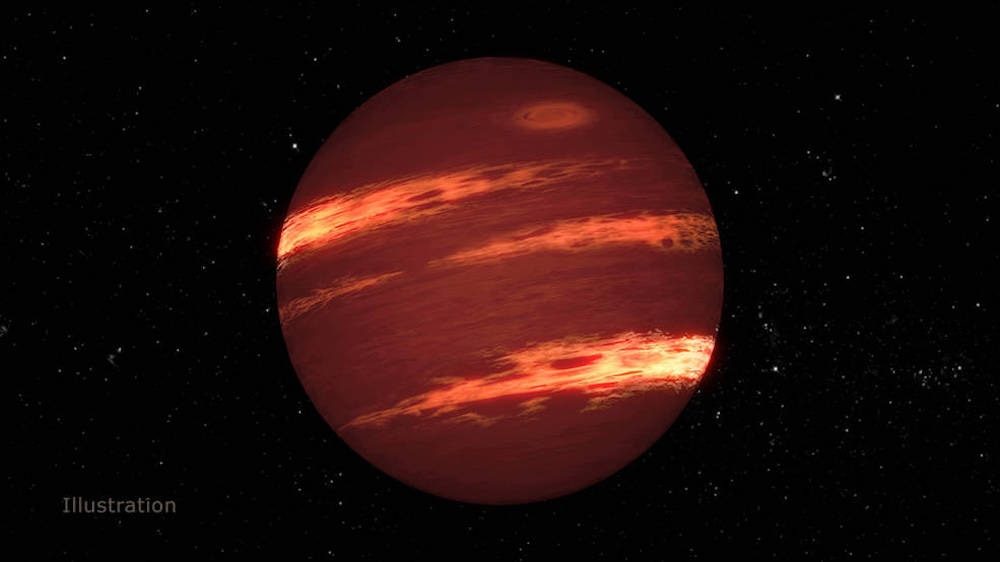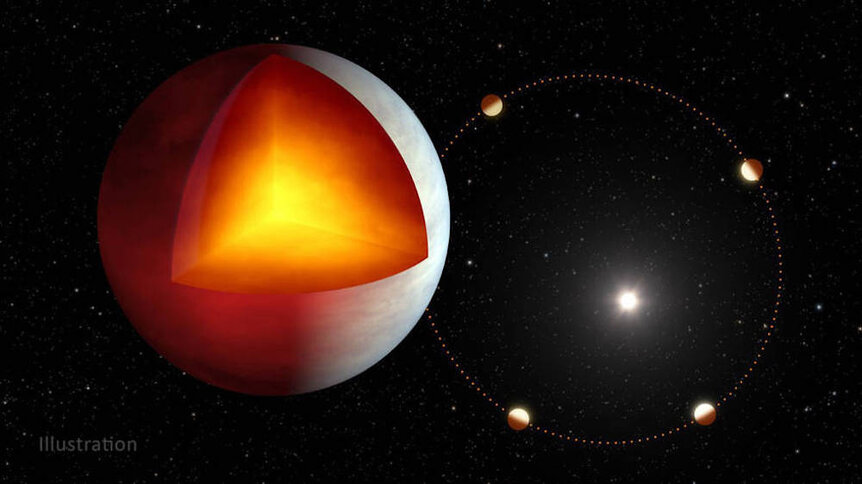Create a free profile to get unlimited access to exclusive videos, sweepstakes, and more!
The seasons on exoplanet XO-3b change day to day
On XO-3b your summer vacation ends before you have a chance to blink, and that's a good thing.

The discovery of exoplanet XO-3b was announced in May of 2007, but it's back in the news due to a recent study which revealed new details about its orbit and seasonal variability. The distant planet is bizarre when compared to the worlds we’re more familiar with in our own solar system. Precisely how bizarre, is the focus of research carried out by Taylor Bell, a post-doctoral researcher at the BAER Institute at NASA Ames, and colleagues, using data from the now decommissioned Spitzer Space Telescope. Their findings were published in The Astronomical Journal.
XO-3b is a hot Jupiter, a classification of exoplanets with masses at or greater than Jupiter orbiting close to their parent star. These sorts of planets are moderately common among exoplanet discoveries, though that may say less about their abundance in the universe and more about observation bias. Bigger planets are easier to spot, especially when they’re close to their star, making them comparatively easier to find with current discovery methods.
At first glance, XO-3b doesn’t seem all that big. It has a radius only 1.2 times that of Jupiter, but a mass of nearly 12 times our solar system’s largest planet. What makes it truly special, however, is not its size but its orbit and relationship with its star.
The distant exoplanet and its star are practically face to face, with a distance of only about 4.2 million miles between them. For context, the Earth orbits approximately 93 million miles from the Sun, more than 20 times more distant. In addition to its orbit being close, it’s also weird and fast. Unlike most of the other hot Jupiter’s we’ve found, XO-3b’s orbit is highly elliptical. At closest approach, the planet receives roughly three times as much stellar energy as it does at its furthest point.
"The majority of exoplanets that are known so far, especially the ones that are well studied are on short period circular orbits around their stars," Bell told SYFY WIRE. "XO-3b is one of the most eccentric orbits, kind of oval shaped. That's very unique among the wealth of exoplanets."
Earth’s orbit around the Sun is comparatively circular and even then, the relatively small difference in solar energy we receive as a result of axial tilt results in significant seasonal changes throughout the year. On XO-3b, those seasonal changes are stretched to their extreme. Models of the exoplanet suggest that seasonal differences are hundreds of times more powerful than what we experience here on Earth.
As the planet makes its way along its whiptail orbit, tidal forces from the star shift, growing stronger and weaker depending on its location along the path. Those constant changes in pressure produce heat inside the planet which never really has time to cool off. Even when it’s winter on XO-3b, it’s still incredibly hot, with temperatures estimated to be upward of 3,000 degrees Celsius.
"The seasons really do matter. The tidal heating is important deep inside the planet, but at the outer layers of the atmosphere it has a pretty minimal effect. In the regions of the atmosphere that we're able to probe the seasons have a strong effect," Bell said.
One question still under some investigation is precisely why XO-3b has such an unusual orbit in the first place. The prevailing hypothesis is that this is a relatively new situation for the planet. Scientists think it likely formed much further out, beyond the snow line of its planetary system, where temperatures are cold enough that water can freeze solid. For reasons as yet unknown, XO-3b seems to have migrated in toward the center of its system, until it was up close and personal with its star. The eccentricity of its orbit is a consequence of that migration.
In order for planets to become so big, we typically believe they have to form further out before they migrate in. There's a couple of ways that can happen," Bell said. "If it exists in a dense region with a lot of stars, that can mess up the planet's orbit. You might also have two Jupiter-like planets interacting with one another. One of them can get kicked out of the system while the other gets pushed in. Because XO-3b is on such an eccentric orbit, that seems to suggest a violent cause."
There’s good news on the horizon for the planet though. Over time, the eccentricity in its orbit should level out, and XO-3b will fall into a more regular, circular orbit. Once it does, the seasonal variability should stabilize some.
That should make predicting the weather a little bit easier, but somehow, we still don’t think it would make a very good vacation spot.



























